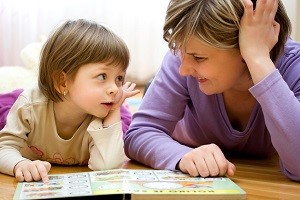Uses and side effects of Artane medication
TweetAntiparkinsonian
ARTANE trihexyphenidyl HCl is a synthetic antispasmodic drug. Trihexyphenidyl is an anticholinergic antiparkinsonian agent. It produces an atropine-like blocking action of parasympathetic-innervated peripheral structures, including smooth muscle. It also exhibits a direct spasmolytic action and weak mydriatic, anti-sialogogue and cardiovagal blocking effects. In small doses, trihexyphenidyl depresses the CNS but larger doses cause cerebral excitement resembling the signs of atropine toxicity.
Common side effects may include:
Blurred vision, dry mouth, nausea, nervousness
These side effects, which appear in 30% to 50% of all people who take Artane, tend to be mild. They may disappear as your body gets used to the drug; if they persist, your doctor may want to lower your dosage slightly.
Recommended dosage
Your doctor will individualize the dose to your needs, starting with a low dose and then increasing it gradually, especially if you are over 60 years of age.Precautions
Closely observe patients with cardiac, liver, kidney or hypertensive disorders. Patients undergoing prolonged therapy should be subjected to careful periodic review to avoid untoward reactions. Trihexyphenidyl should be used with caution in patients with glaucoma, obstructive disease of the gastrointestinal or genitourinary tracts, and in elderly males with possible prostatic hypertrophy. Trihexyphenidyl may cause anhidrosis. Caution should be exercised during hot weather especially if given with other anticholinergic drugs. Incipient glaucoma may be precipitated by trihexyphenidyl.
Overdose
Symptoms:
May be any of those seen in atropine poisoning: CNS depression, confusion, hallucinations, psychosis, ataxia, muscle weakness, dry mouth, mydriasis, blurred vision, palpitations, shock, convulsions, respiratory arrest, anhidrosis, hyperthermia, glaucoma, constipation.
Treatment:
Maintain respirations, cardiac output, and fluid and electrolyte balance. Give ipecac syrup and activated charcoal or perform gastric lavage if no contraindications exist. Ice bags may be used for hyperthermia. Control excitement with i.v. diazepam. Propranolol may be used for arrhythmias. Physostigmine may be used when indicated to reverse convulsions, cardiac arrhythmias and hallucinations. It is not recommended for routine use or to reverse coma.


Sometimes crying or laughing
are the only options left,
and laughing feels better right now.

Current Issue
 Self Help Leaflets Take the help of our self help leaflets or booklets. |
 The DG Magazine All about living with depression |
Alphabatical list of Medicines
A || B || C || D || E || F || G || H || I || J || K || L || M || N || O || P || Q || R || S || T || U || V || W || X || Y || Z
NIMH Medications Booklet- Part I
NIMH Medications Booklet- Part II: Index of Mental Health Medications.
Children's Medications Chart
Cymbalta sometimes used to treat anxiety disorders.
Cymbalta and weight gain
Cymbalta loss weight
Cymbalta and ocd
Cymbalta for depression
Cymbalta duloxetine
Cymbalta and fibromyalgia
Bipolar disorder trileptal
Trileptal side effects
Amphetamine and Dextroamphetamine
Dextroamphetamine
Clomipramine side effects
Mirtazapine side effects

















